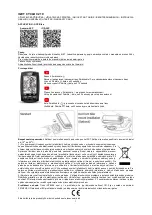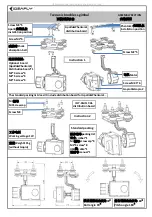
Chapter 19
Capturing from External I/O Devices
259
Other
Information
19.2
Specifications of External I/O Devices
To prepare an external I/O device, select the product satisfying the following specifications.
Connection
connector
ø3.5 4-pole pin mini-plug
•
1 pin: Exposure timing signal (Output : HI active)
•
2 pin: Trigger enable signal (Output : HI active)
•
3 pin: External trigger (Input : HI active)
3.3 V
3.3 V
4.7 kΩ
100 Ω
3.3 V
10 kΩ
4.7 kΩ
100 Ω
DS-L3 side
External device side
Connection circuit
diagram
Note: A TTL/LVTTL-level signal also can be input to 3 pin.
In trigger capture, exposure is performed by detecting the rising edge of a trigger signal. At this time,
values set in advance from PC applications such as the NIS-Elements are used for the exposure time and
camera gain.
Signal timing
The following describes the timing sequence of trigger capture:
Trigger signal
Exposure
Exposure timing signal
Trigger enable signal
•
There is a time lag of up to 0.7 ms from when a trigger signal is input until exposure starts.
•
Once a trigger signal is input, the next trigger signal is not received until the next capture becomes
available. Therefore, a trigger signal input during this period is invalid. After the rising edge of a trigger
enable signal, trigger signals can be input.
•
For details on how to operate trigger capture, see the instructions attached with your application
software.
GND
2 pin
1 pin
3 pin
1 ms or more
0.7 ms or more
Up to 200 ms (when image
bank to be transferred exists)
2 pin
1 pin
3 pin
GND
Trigger enable signal
3 pin (input pulse width: 1 ms or more)
•
In trigger mode:
trigger signal (triggers exposure to
start when switch-off state)
•
In other modes:
capture signal (captures the image
when switch-on state)
Exposure timing signal
Summary of Contents for DS-L3
Page 2: ......












































